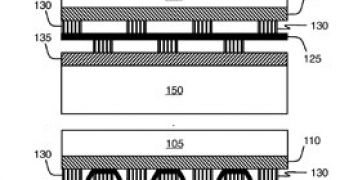Apple is constantly looking to improve its products, and considering that the multi touch interface of the iPhone is the hot new thing, it is not surprising that Apple wants to take it as far as it can go. Recent patents reveal that the company is planning to add another dimension to the touch by implementing pressure sensitivity.
The multi touch interface of the iPhone is amazing, as pretty much everyone that has used one reports, but it could be even better. Apple wants to add more depth by making the device react to the force of the touch rather than just its presence alone. The patent titled "Force Imaging Input and Device System" was submitted last year in March but only published yesterday. It describes a method of detecting the strength of the user's input, which the company believes could be used to add a totally new element of control.
"One drawback to using touch pads as input devices is that they do not generally provide pressure or force information," the company writes. "Force information may be used as another input dimension for purposes of providing command and control signals to an associated electronic device."
Patent inventors Brian Huppi and Steven Hotelling plan on lining touch pads with a set of traces which would be joined together by a spring membrane layer underneath the surface. Thus, touching the pad would create a capacitive image in circuitry, indicating where contact has been made. The closer the membrane reaches conductive elements inside the layer, the more force has been applied by the user.
Apple's patent primarily describes touch pads used in portables, but they also mention that an LDC touch screen could be built using the same principles, thus pointing to the iPhone. Another key factor is that the system would be able to recognize more than just one source of input at any given time, thus allowing for a multi touch pressure sensitive interface. Apple even references an older patent for a "Multipoint Touch Screen" as supporting evidence for its new control method.

 14 DAY TRIAL //
14 DAY TRIAL //